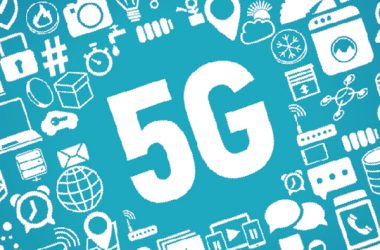
Tarek Saadi, Vice President and Head of Sales, Ericsson Region Middle East and East Africa, talks about how LTE networks are changing the face of mobile technology.
Mobile operators around the world are implementing Long Term Evolution (LTE) networks in order to support their existing 3G networks and offer uninterrupted mobile broadband services to their customers. According to Ericsson’s Mobility Report 2014 there were approximately 500 million mobile subscriptions to LTE, this is estimated to increase to 3.1 billion by 2020, globally. HSPA/GSM will continue to play an important role in providing complementary coverage in all markets, in addition to LTE which will be available in all regions.
The number of mobile subscriptions is growing globally, increasing by 6.9 billion in Q3 2014 alone, 375 million of this increase can be attributed to the Middle East (109 percent penetration). One of the main reasons for the rapid growth in smartphone subscriptions is that subscribers in the Middle East and Africa are exchanging their basic phones for smartphones. This is partly due to the increased availability of lower cost smartphones. At the end of 2014, mobile subscriptions in the Middle East and Africa were mainly GSM/EDGE only; however, with the rapid global growth of LTE, it is predicted that by 2020 85 percent of Middle East and Africa mobile subscriptions will be 3G/4G.
Mobile devices and networks are continuously evolving. There is evident growth in the popularity of streaming video through the use of apps, which has seen a shift from web browsing towards more app-based mobile usage which is indicative of the changing consumer preferences. However, video buffering is still prominent in in-app streaming, which poses a problem for operators who are required to provide faster upload/download speeds which are enabled through the faster network speeds that come with continued HSPA and LTE deployments.
Continued HSPA and LTE deployments enable faster networks and therefore improved video app coverage. Technological improvements, like video compression techniques, allow higher resolutions to be more efficiently transmitted over mobile broadband networks, helping operators accommodate increased demand.
While 3G is still dominant within the network space, it is being used in conjunction with 4G (LTE) by most operators in the region. With LTE, the user experience is even better. An increasing number of mobile applications are significantly enhanced with LTE technology; social media apps, search engines, presence applications and content-sharing sites such as You Tube are a few examples. With mobility, these applications become significantly more valuable to users. User-generated content is particularly interesting, because it changes traffic patterns, making the ability to uplink more important than ever. The high peak rates and short latency of LTE also enable real time applications such as gaming and video-conferencing, making LTE and inevitable transition for most operators.
Consumers understand and appreciate the benefits of 3G and LTE networks. With increased mobility comes increased data use, and uninterrupted service becomes more important than ever, to the end user, who will no longer wait for a WIFI connection and generally connects through mobile data. LTE offers ubiquitous coverage and roaming within existing 3G networks.
One of the key success factors for any technology is economy of scale. The volume advantage is beneficial for both handsets and infrastructure equipment, as it drives down the manufacturing costs and enables operators to provide cost-efficient services to their customers. This is also one of the main reasons new operators will benefit from LTE.
Operators are now doing business in an increasingly competitive environment, competing not only with other operators, but also with new players and new business models. However, new business models also mean new opportunities and mobile operators have the advantage of being able to offer the competitive delivery of LTE solutions using existing investments in 3G networks. Even as most of the world is in the early stages of LTE deployment, companies are already researching the next generation of mobile technology, 5G.
This is why operators are so active in formulating strategies and driving requirements for existing LTE technology and pioneering 5G networks through standardisation bodies. Some of the world’s leading operators, vendors and research institutes have joined forces in the Next Generation Mobile Networks (NGMN) programme, which works alongside existing standardisation bodies and has established clear performance targets, fundamental recommendations and deployment scenarios for a future wide-area mobile broadband network. Although not defined by NGMN, LTE meets these requirements which include efficient reuse of existing assets, no impact on HSPA road maps and cost efficiency.
LTE offers several important benefits for users and operators including enhanced performance and capacity, simplicity and a wide range of compatible terminals which will incorporate embedded LTE modules. Operators can introduce LTE flexibly to match their existing network, spectrum and business objectives for mobile broadband. Therefore, with increasing competition and the end-users’ demands for faster more efficient services, there is still so much to come from LTE networks, it remains the technology of the future.





